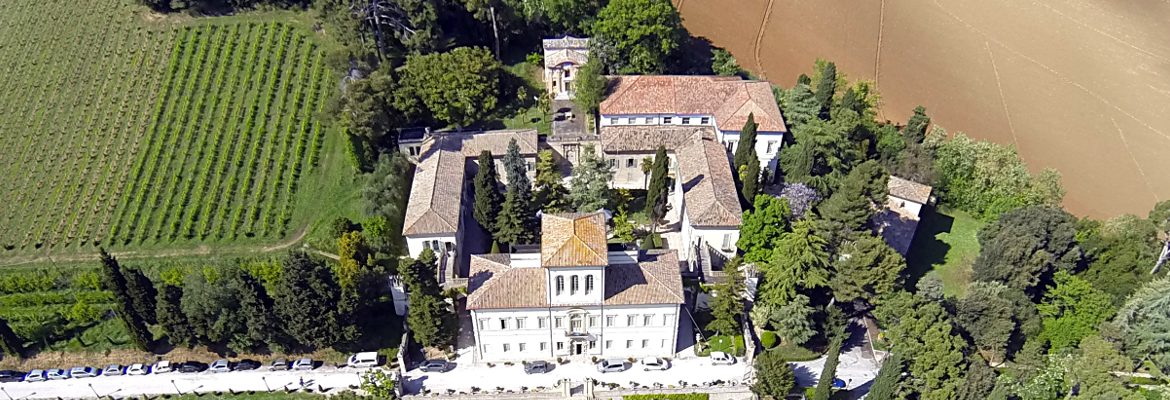A splendid example of a villa and its Italian garden, Villa Caprile was built by the marquis of Bergamo Giovanni Mosca, descendant of a noble Lombard family who moved to the Marche in 1550 following the acquisition of the Gradara castle. The nobleman wanted a summer residence where to spend holidays and hold receptions. The construction started in 1640 and the project was probably always designed as to give birth to a place dedicated to peace and leisure. This hypothesis is further confirmed by a description found in the travel diary of Monsignor Lancisi, who was sent by Pope Clement XI Albani to visit the duchy of Urbino. After outlining the structure and the decorations of the villa, the clergyman dwells on the aquatic features of the gardens, in which “machineries, hisses, sounds, steps and fountains starting off when passengers go by are in no way inferior to Tivoli or Frascati and any of their artifices”. The most important renovation was carried out in 1763, by the descendant of Giovanni, Carlo Mosca, to whom we owe the architectural layout that we can admire today.
Destined to host receptions and serve as a holiday house, Villa Caprile hosted very important personalities of that time, including Casanova, Stendhal, Rossini and Leopardi. Marquis Francesco Mosca, who was a Jacobin enthusiast, also hosted Napoleon Bonaparte in 1797. It was him who planted the “tree of freedom” and then transformed the villa from an elitist and aristocratic house to a place of public enjoyment. After a while, however, the residence went back to welcoming a selected audience of illustrious personalities only. In the summers of 1817 and 1818, Carolina of Brunswick, Princess of Wales, rented Villa Caprile as her summer house, thus making it the set for her lively social life. In 1876, with the revival of the Academies, Villa Caprile was purchased by the Agricultural Academy in order to start the project of an Agricultural Colony; an agreement was made not to distort the existing architectural structure.
Due to financial difficulties, the property was sold in 1925 to the Province of Pesaro Urbino, which recently commissioned its restoration. It is currently home to the Agricultural Technical Institute Cecchi, a high school specialized in teaching agriculture-related subjects.
With regard to the architectural structure of the villa, the seventeenth-century structure shows a harmonious facade which acts as a scenic backdrop for the precious gardens, rich in exotic plants and water games. The plant was modified in the 18th century following a renovation, which further enriched the building with a new central tower. Concerning the interiors, the grand staircase welcomes visitors with all its magnificence. The hall decorated with stuccos in which the life of Saint Paul is represented should also be noted.
The gardens embrace the hilly surroundings of the villa and are arranged on three terraces connected by stairways. The first stairway, consisting of a double ramp, is the oldest and leads to the first garden. This section of the park is home to the famous water games, which surprise and entertain visitors with sudden splashes of water coming out of hedges, vases and monuments. At the time of their construction, a majestic filtering gallery was built in order to bring water to the fountains, penetrating for almost two kilometers into the hill to collect it. The second level of the gardens houses the pomarium and its fruit trees; this section is a tribute to Arabic gardens which were typical in the areas under Spanish influence. Finally, the third level houses the viridarium, with the fragrant essences typical of the era, such as rosemary, sage, juniper, thyme and so on. A small open air theater, marked by a line of cypresses, is still visible today; it was made entirely from vegetation, including the “stage” and the steps.




